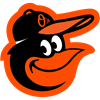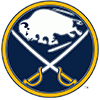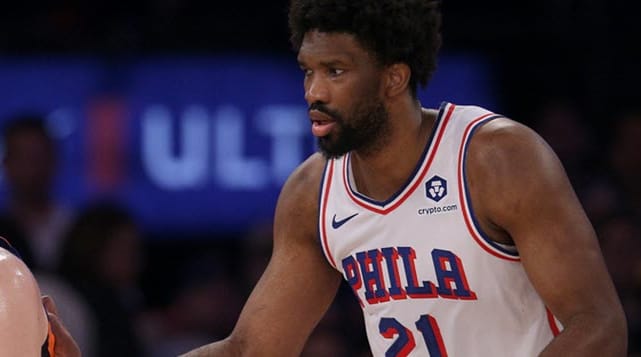Everyone is looking for value in their drafts. Getting a player who will provide third-round production in the sixth round, for instance, is ideal. Unfortunately, this is much easier said than done. But a youth movement in Salt Lake City could hold the key to such an opportunity, if you've been paying attention.
It all starts with a simple question:
What do Kevin Love and Derrick Favors have in common?
They're both 6-10 power forwards. Both players are former top-5 draft picks, Love No. 5 overall in 2008, Favors No. 3 overall in 2010. They also both happened to play behind Al Jefferson for two seasons, and Big Al left their respective teams, Minnesota in 2010 and Utah in 2013, to play elsewhere. Love and Favors were even both 22 years old when Jefferson skipped town.
Here is Love's story:
In 2009-10, Love saw 28.6 minutes per game for the T-Wolves in the final season with Jefferson in the fold, before he was acquired by the Utah Jazz. People who were paying attention heading into fantasy drafts for the 2010-11 season knew that the absence of Jefferson would result in an increased role for Love, who had already averaged 14.0 points and 11.0 rebounds per game the previous season in a supporting role. It wasn't unreasonable to think that Love would get 36 minutes per game with the paint all to himself, and his per-36 minute numbers happened to be 17.7 points and 13.9 rebounds per game, numbers that should
Everyone is looking for value in their drafts. Getting a player who will provide third-round production in the sixth round, for instance, is ideal. Unfortunately, this is much easier said than done. But a youth movement in Salt Lake City could hold the key to such an opportunity, if you've been paying attention.
It all starts with a simple question:
What do Kevin Love and Derrick Favors have in common?
They're both 6-10 power forwards. Both players are former top-5 draft picks, Love No. 5 overall in 2008, Favors No. 3 overall in 2010. They also both happened to play behind Al Jefferson for two seasons, and Big Al left their respective teams, Minnesota in 2010 and Utah in 2013, to play elsewhere. Love and Favors were even both 22 years old when Jefferson skipped town.
Here is Love's story:
In 2009-10, Love saw 28.6 minutes per game for the T-Wolves in the final season with Jefferson in the fold, before he was acquired by the Utah Jazz. People who were paying attention heading into fantasy drafts for the 2010-11 season knew that the absence of Jefferson would result in an increased role for Love, who had already averaged 14.0 points and 11.0 rebounds per game the previous season in a supporting role. It wasn't unreasonable to think that Love would get 36 minutes per game with the paint all to himself, and his per-36 minute numbers happened to be 17.7 points and 13.9 rebounds per game, numbers that should have garnered a second- or third-round price tag, but because Love was perplexingly still viewed by some as "unproven," he was able to be snatched up at a discount. Well, Love didn't quite average 36 minutes per game that season (35.8), but what he did do was lead the NBA in rebounding at 15.2 boards per game while also offering 20.2 points with a .470/.417/.850 shooting slash line.
A star was born, both nationally and in fantasy circles.
The signs were there. The starting center whom the team was built around had left town and a rising star was waiting in the wings. These situations don't arise very often in fantasy, but when they do, there's only one chance to strike before the market adjusts.
This is not a "Derrick Favors is the next Kevin Love" story. We could go 25 years and never see another player with Love's combination of skills. This is simply an opportunity. Favors has been given the opportunity to be the starting power forward in Utah and the opportunity to become a star in the league. He is now the face of the franchise after signing a four-year, $49 million contract extension. Fantasy owners also have an opportunity. After reading my compelling comparison of Love and Favors, you may think that Favors is going in the fourth round, maybe even the fifth round of most drafts. Of course, you'd be wrong about that. He isn't going in the top-50 of Yahoo! or ESPN leagues.
As I was saying, this is an opportunity.
Much like Love, Favors brings a lot to the table from a fantasy perspective. In 23.2 minutes per game last season, he averaged 9.4 points, 7.1 rebounds and 1.7 blocks per game. Where rebounding was Love's calling card, Favors has made a name for himself in NBA circles as an elite rim-protector. If we assume Favors sees close to 36 minutes per game, like Love did in his first season without Jefferson, the per-36 minute numbers he generated last season of 14.6 points, 11.0 rebounds, 2.6 blocks and 1.0 steals per game would warrant a third round pick in most formats. But there's also the potential for even more production. Remember how Love outperformed his per-36 minute numbers in Jefferson's absence? This shouldn't have come as a surprise. He finally got to play without Jefferson clogging up the paint, and he was 22 years old, an age when all basketball players should be still improving their games, as was made clear by the fact that he went from being a 33.0 percent three-point shooter in 2009-10 to a 41.7 percent shooter in 2010-11. Favors' game last season was not without areas that he could improve, and I think it is fair to expect a modest improvement offensively, which could result in closer to 16 or 17 points per game. He is a career 49.8 percent field-goal shooter and has shot 65.1 percent for his career from the charity stripe. Even if those rates remain constant, he's still worth a third rounder, but if he improves, he could be a borderline top-20 fantasy player. But since most people aren't paying attention, owners that want Favors should be able to wait until the fifth round for this production.
For owners who need blocks and rebounds, Favors is a great option to fill those categories. And since this is still technically Category Strategy (the last preseason edition), here are some more young players (a couple more in Utah) who can offer production elsewhere:
POINTS
Enes Kanter, F/C, Jazz
Like Favors, Kanter is ready to take advantage of a newfound starting role. I was able to watch Kanter on several occasions last season, and his ability to score around the hoop is very impressive. He has way more moves than a 21-year-old should possess, and he should be in line for 30 minute per game this year now that Jefferson and Paul Millsap are out of the picture. His per-36 minute average of 16.9 points per game last season would be my conservative estimate if he received that much run, and I don't think 15-17 ppg is unreasonable if he sees 30 mpg.
ASSISTS
Gordon Hayward, G/F, Jazz
There has been talk that Hayward will be more of a creator this season, and it will be needed, as 80-year-old Jamaal Tinsley, Alec Burks (who is naturally a shooting guard) and rookie Trey Burke figure to be the only options at the one. Last season he averaged 3.0 assists in 29.2 minutes per game, but with more minutes and responsibility, I'd look for him to average at least 4.0 assists per game in 2013-14, which is pretty valuable from the shooting guard or small forward spot.
STEALS
Michael Carter-Williams, PG, Sixers
MCW is one of my favorite late round options for assists, since we know he is clearly the starting point guard in Philly. But he has also impressed on the defensive end. He averaged 2.1 steals per game in the preseason, and recorded nine thefts in his last two games alone. His shooting numbers won't be pretty, but think of him as a poor man's Ricky Rubio, whose assists and steals make up for his lousy shooting.
THREE-POINTERS
Bradley Beal, SG, Wizards
If Favors is in my top-3 most targeted players in drafts, Beal and Anthony Davis probably round out that trio. In his final six preseason games, Beal averaged 2.8 three-pointers per game, and mixed in a 30-point and 29-point game. I think something in the 22-24 points per game range is totally within reach, and he'll get there by averaging 2.5 treys per contest.

























